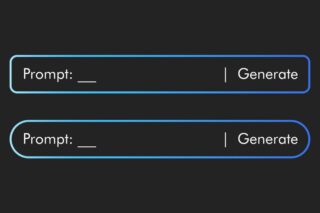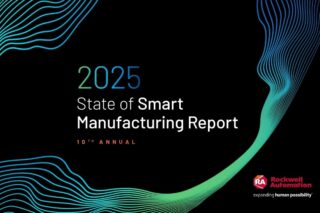MUNICH — Nov. 2019 — The Fujitsu Forum focused on how a human-centric approach to the latest digital technologies creates trust in new business models. A large percentage of businesses are currently undergoing digital transformation. However, according to the European Commission, EU businesses are not taking full advantage of these advanced technologies or the innovative business models offered by the collaborative economy.
Yves de Beauregard explains how Fujitsu works with clients to help them during their transition. Their human-centered approach to technology and services makes the transformation seamless.
DirectIndustry e-magazine: How does Fujitsu integrate a human-centered approach to its digital technologies?
Yves de Beauregard: Integrating technology for the sake of using technology is not interesting. We need to consider how it will benefit humankind. Not only on a global scale but on an everyday basis for our clients and their customers: each individual. We ask how technology will change the game for our clients. How it will add value so that our client’s customers can add value to their customers, and so on. It’s about serving the general public.
The example Paul Patterson [SVP head of Northern and Western Europe, Fujitsu] gave during the keynote earlier shows how we incorporate technology to serve the general public—providing services to Kongsberg, whose cargo shipping department is using the Digital Annealer to reduce fuel spent on large vessels. These large ships pollute a lot, and the company’s main expense is fuel, around 50% of their total expenses. If we can help them create a business plan to create a supply chain that is less polluting and less expensive, we help solve a larger societal issue that concerns everyone in addition to reducing expenses.
We no longer believe that a deal will or should benefit just two parties. It needs to serve the entire chain. Human-centric means that when considering what innovations to integrate or produce, we look for the benefits for the end user.
DirectIndustry e-magazine: Would you say that going digital is mandatory today for businesses if they want to stay in the game?
Yves de Beauregard: Incorporating one element of technology does not mean “digital transformation.” You need a combination of technology to stay in the game. I help our customers thrive in this new digital world. What I mean by that is molding together the physical and digital worlds. The companies who do this are the ones who will make it.
DirectIndustry e-magazine: What are the biggest challenges stopping companies from becoming fully digitalized?
Yves de Beauregard: Technology alone will not change a business. It’s how you can run the business in a different mode, powered by technology, not the other way around. [Incorporating technology and changing the company’s business model] needs to be economically attractive for clients as well. If a client wishes to provide modular services, this means they will need to optimize the time and task chain. We need to consider the future market; in the next ten years, people who have cars will not drive them. There are some important questions to ask. How do we balance all of the logistic questions? How do we manage the many combinations of routes and figure out which one is the best? And what about ensuring the best costs?
Everyone wants an electric car, for example, but the network cannot sustain the amount of charges for everyone. How do we make that work: smart networks that balance the load of power in cities, areas, and industries, when none of our current infrastructure can handle it? We cannot afford to rebuild all of our infrastructure and it’s too complex with existing technologies. This is where quantum comes in.
DirectIndustry e-magazine: How does Fujitsu help its clients go digital using quantum-inspired technology?
Yves de Beauregard: This is a real game-changer. The Digital Annealer (DA) will create a disruption, like when we switched from cable internet to Wi-Fi and 4G. Quantum computing has so many applications that it’s impossible to see all the impacts it will have. What is certain, though, is that it’s the beginning of an amazing journey. Some companies are saying quantum computers won’t be ready for many years. However, our system is a quantum-inspired technology, one of the first on the market that’s easy to use. It’s already in use helping our customers execute optimal solutions that they have in their heads.
It is not an AI-based, machine-learning system; it’s a modulating system. We’re working with a mobile operator that can find, using the DA, the best route in its network, from A to B, to do load balancing. This means reducing costs in the network and increasing investments elsewhere, such as in 5G which requires a lot of investment.

Keeping our human-centered approach in mind; although the DA is available now, we need to start with the application and not the technology.
DirectIndustry e-magazine: How does AI fit into digital transformation and how does it compare to the Digital Annealer solution?
Yves de Beauregard: AI comprises the most simple chat box to the most complex; it’s a family, a range of technology to embrace many realities, all of which are toolsets. More important than the toolset is how we can help our clients become disruptors in their market. We discuss with them where they want and need to go to create that disturbance. Then it’s our job to find the best combination of tools to succeed. There is not one solution. We have to find the right combination for a specific case. My biggest worry is not succeeding in helping our clients become disruptors in their market. Because that means they will get disrupted by someone else.
Our digital transformation centers—in London, Munich, Sydney, etc.—are another tool we use to help our customers think about what their business will look like in the future. We use these centers to translate this vision into the combination of tools necessary to create a new business model that will help them succeed. Believe it or not, we very rarely talk tech during these sessions. We only talk about the business: What will it look like, what are the challenges? Once we have that then we can find the right combination of technologies.
The Digital Annealer will have its hype for a while but it’s not going to be all rosey. We’ll have the disappointment curve, then go back up. Iit’ll be up and down until we end with a concrete solution.
READ MORE: Fujitsu’s Quantum-inspired Digital Annealer Aims to Facilitate the Digital Transformation











